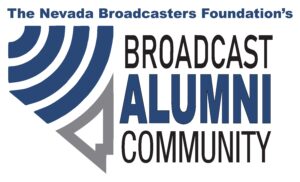Here are some of the regulatory developments of significance to broadcasters from the past week, with links to where you can go to find more information as to how these actions may affect your operations.
- The FCC released three drafts of Notices of Proposed Rulemaking (one on ATSC 3.0 and two relevant to earth station operations) which, despite the federal government shutdown, it intends to vote on at its regular monthly Open Meeting on October 28:
- The FCC released a draft Fifth Further NPRM proposing changes to its rules governing TV stations transitioning to the ATSC 3.0 standard. The Notice says that it is intended to remove regulatory barriers to provide TV stations with additional flexibility during the ATSC 3.0 transition, including by allowing stations to determine when to stop broadcasting in ATSC 1.0 or to continue simulcasting in both standards with fewer restrictions on their ATSC 1.0 signal. The FCC also seeks comment on issues including the use of encryption or digital rights management, potential requirements for new TV and multichannel video programming distributors to support ATSC 3.0 signals, the sunset of ATSC 1.0 service, and other matters related to the ATSC 3.0 transition.
- The FCC released a draft NPRM proposing to modernize the regulatory framework for space and earth station licenses. The FCC is proposing sweeping changes to its existing regulatory framework, including expedited licensing procedures, streamlined application requirements and processing timeframes, extending the license terms for most earth stations, expanding the list of modifications that applicants can make without prior approval, and shifting to a predominantly nationwide blanket licensing approach for earth stations and a simplified approach to earth station authorizations generally.
- The FCC released a draft NPRM proposing to facilitate more intensive use of spectrum in the 24 GHz, 28 GHz, upper 37 GHz, 39 GHz, 47 GHz, and 50 GHz bands (the UMFUS bands), which are used by some earth stations. The FCC proposes permitting more intensive use of the UMFUS bands through means such as spectrum sharing agreements among band users and reducing burdens on the earth station application process by eliminating required showings. The FCC also seeks comment on how the UMFUS bands can be more intensively used, and whether the NPRM’s proposals will lead to greater earth station deployment or will instead negatively impact current operations.
- The FCC appealed an April decision of the U.S. Court of Appeals for the Fifth Circuit, which raised significant questions about the FCC’s ability to fine regulated entities for FCC rule violations. As we noted here, the Fifth Circuit overturned a $57 million FCC-imposed fine on AT&T for not adequately protecting the location data of some of its mobile phone users, finding that the imposition of the fine violated the company’s 7th Amendment right to a jury trial. Following the Fifth Circuit’s decision, the U.S. Courts of Appeals for the D.C. Circuit and Second Circuit issued separate decisions upholding FCC fines imposed on T-Mobile and Verizon for similar violations, creating a “circuit split” which often provides grounds for the Supreme Court to decide to hear an appeal. The FCC asks the Supreme Court to determine whether the FCC’s authority to issue fines under the Communications Act is consistent with the Seventh Amendment and Article III of the U.S. Constitution.
- The Senate Commerce Committee held a hearing titled “Shut Your App: How Uncle Sam Jawboned Big Tech Into Silencing Americans.” The hearing examined how government agencies have used tactics to pressure Big Tech into censoring speech protected by the First Amendment, a practice known as “jawboning.” The hearing was largely a discussion by Republican members about the deplatforming by online platforms of what the platforms viewed as misinformation, and by Democratic members about FCC Chairman Carr’s recent threat against ABC and its affiliates concerning Jimmy Kimmel’s monologue (see our notes here and here). A video of the hearing, including the witnesses’ written testimonies, can be found here.
- The California legislature passed a law prohibiting loud commercials on video streaming services. The law mandates that commercial volume levels on video streaming platforms be at the same levels as the movies or TV shows being streamed. The law will go into effect next July. It requires streaming platforms to comply with the FCC’s rules issued under the Commercial Advertisement Loudness Mitigation of 2010 (CALM Act), which currently apply only to broadcast and cable television. The California law does not include any unique enforcement mechanisms, nor does it create any private right of action for viewers harmed by loud commercials on streaming platforms. As we noted here, earlier this year, the FCC adopted a still pending NPRM seeking comment on updating the FCC’s CALM Act rules, including asking whether the FCC has authority to regulate streaming providers. Former FCC Commissioner Starks issued a statement at that time about his concerns over the FCC’s authority to regulate these Internet platforms.


